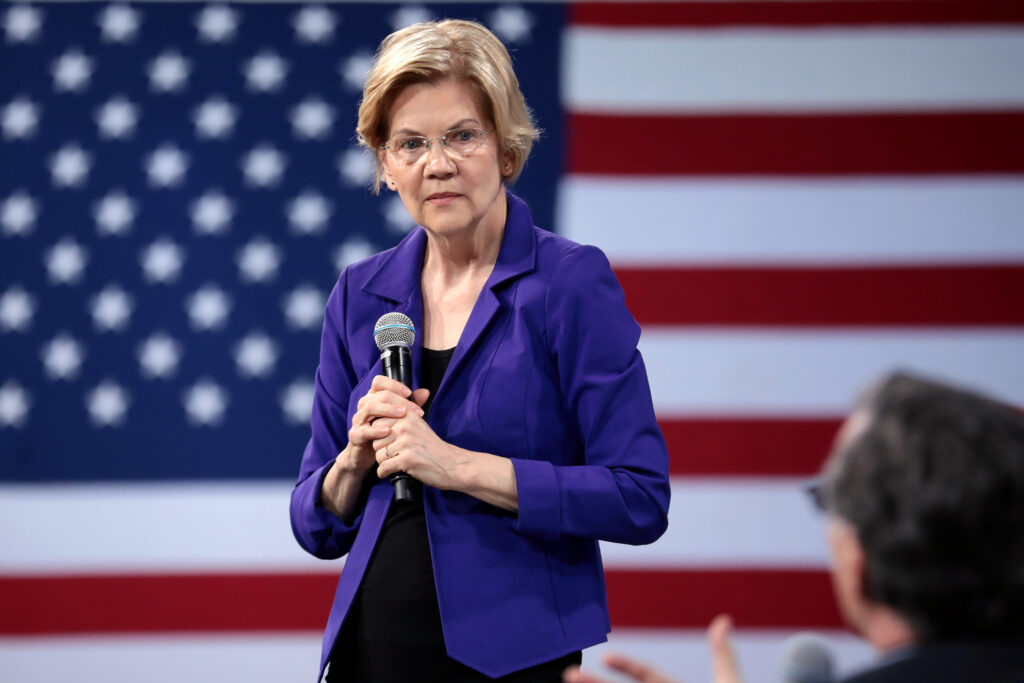This piece was originally published in the National Review.
If there were any doubts about the particulars of Elizabeth Warren’s energy-policy plans after the recent CNN climate town hall, she cleared them up in a single tweet. “On my first day as president, I will sign an executive order that puts a total moratorium on all new fossil fuel leases for drilling offshore and on public lands,” she wrote. “And I will ban fracking—everywhere.”
Throughout her campaign, Warren has made her plan to end new federal fossil-fuel leases well known. With that tweet, she also became one of only a few candidates—including Senators Bernie Sanders and Kamala Harris—to call for a nationwide ban on hydraulic fracturing, a technique, used to extract oil and gas from shale formations, that has revolutionized America’s energy industry.
Presidential candidates often put forward fanciful policy proposals knowing full well that Congress will be unable or unwilling to pass them. Behold, for example, the climate-policy arms race of the Democratic presidential primary. Nearly every candidate in the crowded field has proposed some form of a multi-trillion-dollar Green New Deal—including everything from carbon taxes and federal job guarantees to massive new spending programs—that almost certainly would not pass in the 117th Congress.
But executive action is different, which is why pledges such as Warren’s are cause for concern. For the moment, set aside that presidents lack the authority to single-handedly outlaw an entire industry such as fracking, which mostly occurs on private lands. Presidents do have significant authority to shift federal energy policy, especially on public lands and waters.
So let’s drill down on—er, gently ask—what Warren’s anti-fracking, anti-drilling plan would mean in practice.
First, consider Warren’s moratorium on new federal fossil-fuel leasing. Such a policy would mean no new drilling on the 97 million federal offshore acres and 113 million onshore acres that are currently available for leasing. It would also mean no new drilling on areas that are under existing leases, which have ten-year terms and require permits for each well drilled. It could also apply to export facilities and pipelines, such as those transporting new exports of liquefied natural gas, that cross federal streams and rivers deemed “waters of the United States.”
A moratorium would effectively end drilling on public lands and waters, which in 2018 produced more than 2 million barrels of oil per day and 4 trillion cubic feet of natural gas, generating nearly $9 billion in federal revenue. It would also handcuff America’s private energy sector by limiting its ability to deliver its products to market. “No country in the world has ever abandoned a natural resource of this proven value,” says energy-law professor James Coleman of Southern Methodist University.
Warren’s pledge illustrates just how far Democrats have diverged from the energy and climate policies of the Obama administration. President Barack Obama presided over, and often championed, a rapid increase in U.S. oil and gas production, driven primarily by the rise of fracking, which has enabled the United States to become the largest oil and gas producer in the world. This has led to cleaner air and lower carbon emissions, cheaper energy, less dependence on foreign imports, a manufacturing renaissance, and massive economic benefits to American consumers. By one estimate from the Brookings Institution, fracking has improved the economic well-being of U.S. consumers by roughly $75 billion per year.
“Everything has gone to 11,” Kathleen Sgamma, president of the Western Energy Alliance, recently told Politico in response to the Democrats’ aggressive climate plans showcased at the CNN forum. “You pick a topic and it’s like President Obama might as well have been a Republican.” Although most of the increase in oil and gas production was the result of fracking on private lands, Obama didn’t exactly shun fossil-fuel extraction on federal property. The amount of public land leased for oil and gas development was higher every year of Obama’s first term than it has been during the Trump administration.
Many experts doubt that Warren could use executive authority to issue an outright ban on new federal leasing—doing so would likely violate several laws governing the management of public lands. But administrations have significant ability to stymie leasing by making it more difficult to drill on public land and by rejecting permits to construct new pipelines. Short of a full-on moratorium, a Warren administration could impose layers of red tape, permitting requirements, and procedural delays that would have much the same practical effect.
Natural gas emits far less carbon dioxide and air pollution than do coal-fired power plants, which are rapidly being displaced in an era of cheap and abundant gas.
Warren’s scheme to ban fracking everywhere is more radical and would clearly be unlawful if attempted through executive order. A Warren administration could try to increase regulations to make fracking less economically feasible, but even that would probably face legal challenges, and Congress is unlikely to go along with a nationwide ban.
A fracking ban or leasing moratorium would also complicate—or, in some cases, directly contradict—several of Warren’s other stated policy priorities. For example, in her public-land policy, Warren calls for mandatory funding of the Land and Water Conservation Fund, a federal program that acquires land for conservation and recreation purposes, authorized at $900 million per year. Yet funding for the LWCF is derived entirely from federal offshore drilling—which, in the same plan, Warren says she would halt, on her first day as president, by issuing an executive order banning new leases.
How exactly she would fund the LWCF—along with any of the other items on her public-lands wish list, such as eliminating the National Park Service’s $12 billion maintenance backlog and making national parks free for all—is unclear. (The leading bipartisan plan in Congress to tackle the park-maintenance backlog, the Restore Our Parks Act, of which Warren is listed as a co-sponsor, would do so using federal oil and gas revenues.)
And that’s to say nothing of the broader consequences of a leasing moratorium or fracking ban on taxpayers overall, which could further undermine Warren’s policy agenda. The billions of dollars in federal royalties generated from onshore and offshore leasing are a significant source of funding for a variety of government programs, as well as for state and local coffers. Of the $9 billion generated from federal leasing last year, nearly $2 billion went back to the states, $1 billion to American Indian tribes, and $3.5 billion to the federal treasury, with additional amounts going to the LWCF and other federal programs. These revenues are the source of many of the public benefits and government services that Warren says she supports and wants to significantly expand.
Consider, for example, education. This month, New Mexico unveiled a plan to provide free tuition at public colleges for all state residents, regardless of family income, using the state’s revenues from oil production. Warren has likewise proposed to make public-college tuition free, although she has provided no plan to pay for it that comes even close to adding up.
Then there are the environmental consequences of a fracking ban. Natural gas emits far less carbon dioxide and air pollution than do coal-fired power plants, which are rapidly being displaced in an era of cheap and abundant gas. This has led to a reduction in U.S. carbon emissions from energy sources over the past two decades—the largest decline in the world since 2005. Trade partners are increasingly counting on this clean-burning gas. According to the U.S. Energy Information Administration, the United States is slated to become a net energy exporter in 2020, thanks to the recent boom in oil and gas production.
If Warren is going to deliver on her bold progressive vision—free college tuition, student-loan forgiveness, universal child care, and a $3 trillion Green New Deal—she’ll need to pay for it somehow. Her catch-all answer to questions of public financing—a 2 percent wealth tax on the über-rich—would come nowhere close to funding such programs. Add in a federal leasing moratorium and a fracking ban, and her plans would be even more in the red. Moreover, by kneecapping America’s natural-gas revolution, she would almost certainly undermine her own climate goals.
Like many of her plans, Elizabeth Warren’s anti-drilling, anti-fracking scheme conveniently ignores policy trade-offs, fiscal realities, and even constitutional limits on presidential authority. It may excite progressive diehards in a crowded Democratic primary, but coming from someone who has been widely praised for her detail-oriented approach to public policy, it is hardly a serious proposal—or at least we should hope it isn’t.




